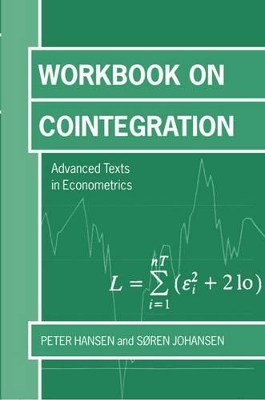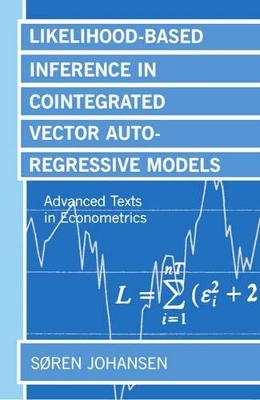Advanced Texts in Econometrics
3 total works
This workbook is a companion to the textbook Likelihood-Based Inference in Cointegrated Vector Autoregressive Models, also published by Oxford University Press. The workbook contains exercises and solutions concerned with the theory of cointegration in the vector autoregressive model. The main text has been used for courses on Cointegration, and many of the exercises have been posed as either training exercises or exam questions. Many of them are challenging and summarize results published in the literature. Each chapter starts with a brief summary of the content of the corresponding chapter in the main text, which introduces the notation and the most important results.
Likelihood-based Inference on Cointegrated Vector Autoregressive Models
by Soren Johansen
Published 1 November 1995
This monograph, written by a leading statistician working in econometrics, gives a detailed mathematical and statistical analysis of the cointegrated vector autoregressive model. The book is a self-contained presentation for graduate students and researchers with a good knowledge of multivariate regression analysis and likelihood methods. The theoretical analysis is illustrated with the empirical analysis of two sets of economic data. The theory has been developed in close contact with the application and the methods have been implemented in the computer package CATS in RATS.
Likelihood-Based Inference in Cointegrated Vector Autoregressive Models
by Soren Johansen
Published 28 December 1995
This book gives a detailed mathematical and statistical analysis of the cointegrated vector autoregresive model. This model had gained popularity because it can at the same time capture the short-run dynamic properties as well as the long-run equilibrium behaviour of many non-stationary time series. It also allows relevant economic questions to be formulated in a consistent statistical framework.
Part I of the book is planned so that it can be used by those who want to apply the methods without going into too much detail about the probability theory. The main emphasis is on the derivation of estimators and test statistics through a consistent use of the Guassian likelihood function. It is shown that many different models can be formulated within the framework of the autoregressive model and the interpretation of these models is discussed in detail. In particular, models involving
restrictions on the cointegration vectors and the adjustment coefficients are discussed, as well as the role of the constant and linear drift.
In Part II, the asymptotic theory is given the slightly more general framework of stationary linear processes with i.i.d. innovations. Some useful mathematical tools are collected in Appendix A, and a brief summary of weak convergence in given in Appendix B.
The book is intended to give a relatively self-contained presentation for graduate students and researchers with a good knowledge of multivariate regression analysis and likelihood methods. The asymptotic theory requires some familiarity with the theory of weak convergence of stochastic processes. The theory is treated in detail with the purpose of giving the reader a working knowledge of the techniques involved.
Many exercises are provided. The theoretical analysis is illustrated with the empirical analysis of two sets of economic data. The theory has been developed in close contract with the application and the methods have been implemented in the computer package CATS in RATS as a result of a rcollaboation with Katarina Juselius and Henrik Hansen.
Part I of the book is planned so that it can be used by those who want to apply the methods without going into too much detail about the probability theory. The main emphasis is on the derivation of estimators and test statistics through a consistent use of the Guassian likelihood function. It is shown that many different models can be formulated within the framework of the autoregressive model and the interpretation of these models is discussed in detail. In particular, models involving
restrictions on the cointegration vectors and the adjustment coefficients are discussed, as well as the role of the constant and linear drift.
In Part II, the asymptotic theory is given the slightly more general framework of stationary linear processes with i.i.d. innovations. Some useful mathematical tools are collected in Appendix A, and a brief summary of weak convergence in given in Appendix B.
The book is intended to give a relatively self-contained presentation for graduate students and researchers with a good knowledge of multivariate regression analysis and likelihood methods. The asymptotic theory requires some familiarity with the theory of weak convergence of stochastic processes. The theory is treated in detail with the purpose of giving the reader a working knowledge of the techniques involved.
Many exercises are provided. The theoretical analysis is illustrated with the empirical analysis of two sets of economic data. The theory has been developed in close contract with the application and the methods have been implemented in the computer package CATS in RATS as a result of a rcollaboation with Katarina Juselius and Henrik Hansen.


